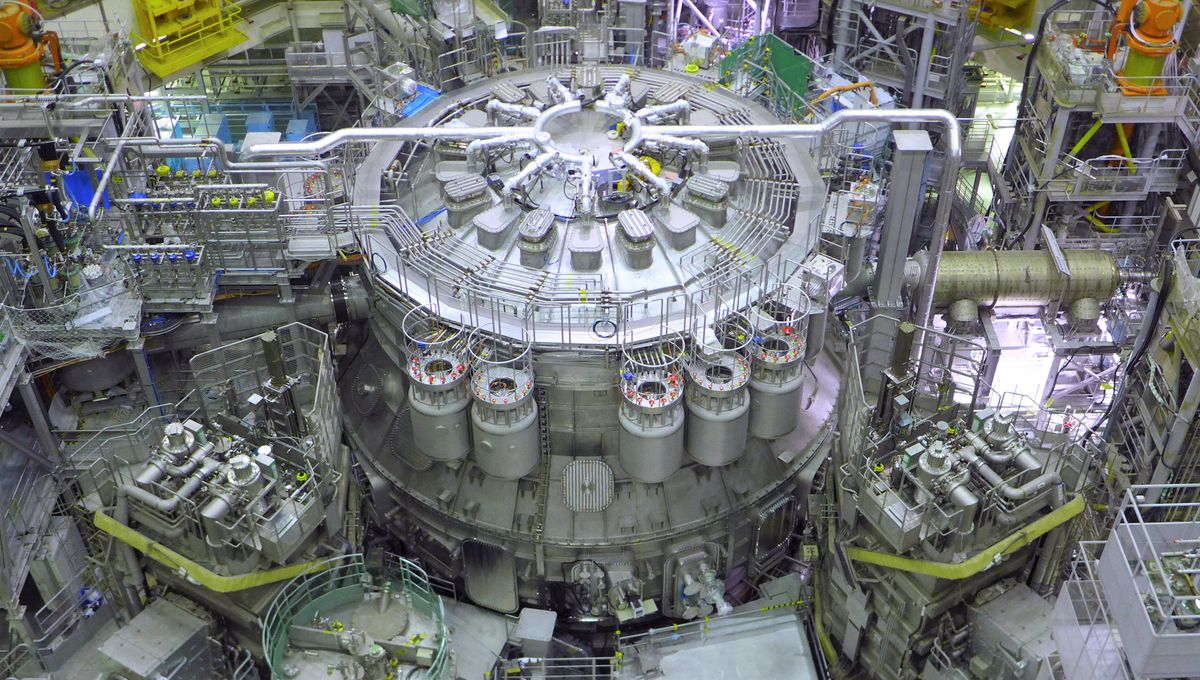
On December 1, Japan inaugurated JT-60SA, the largest operational superconducting tokamak in the world to date. A tokamak is a nuclear fusion reactor shaped like a donut and this new-build in Japan, with the support of the European Union (EU), is meant to be the forerunner of the under-construction International Thermonuclear Experimental Reactor (ITER), which is currently being built in France and is expected to open in a few years.
The goal of this nuclear fusion reactor is to demonstrate that the design can output a net amount of energy. More energy needs to come out than is put in for it to make sense. Nuclear fusion has the potential to release an enormous amount of clean carbon-free energy. After all, it is what powers stars. But to recreate the conditions that happen at the heart of stars, energy needs to be invested. And that’s where the difficult trade-off happens.
A different setup from the tokamak, called inertial confinement fusion, has demonstrated net gain in the last year but still not enough to be commercially viable. This tokamak heats up plasma kept in a strong magnetic field to up to 200 million degrees Celsius (360 million degrees Fahrenheit), with currents going through it at 1 million amps. A household circuit carries between 15 and 20 amps.
Researchers expect that scaling will allow them to extract more and more energy. This is why ITER is designed to be bigger, being able to achieve burning plasma first and then full fusion by 2035. JT-60SA will inform the next steps in reactor approaches, and it is already showing promise. The first plasma was shown to circulate in October with much lower currents going through it.
“What happens here today will matter tomorrow for the contribution of fusion in a carbon-free energy mix. JT-60SA is key to the international fusion roadmap because it provides a one-of-a-kind possibility to learn, operate this unique fusion device and to share that valuable knowledge with ITER,” Marc Lachaise, director of Fusion for Energy, said in a speech during the inauguration.
Fusion for Energy is responsible for the EU’s contribution to ITER. Thirty-five countries are part of ITER: the whole EU, Switzerland, the United Kingdom, India, Japan, Russia, China, and the United States. ITER is being constructed in the south of France and it is expected to have the first fusion plasma inside it in 2025.
Source Link: World's Largest Nuclear Fusion Reactor Opens In Japan